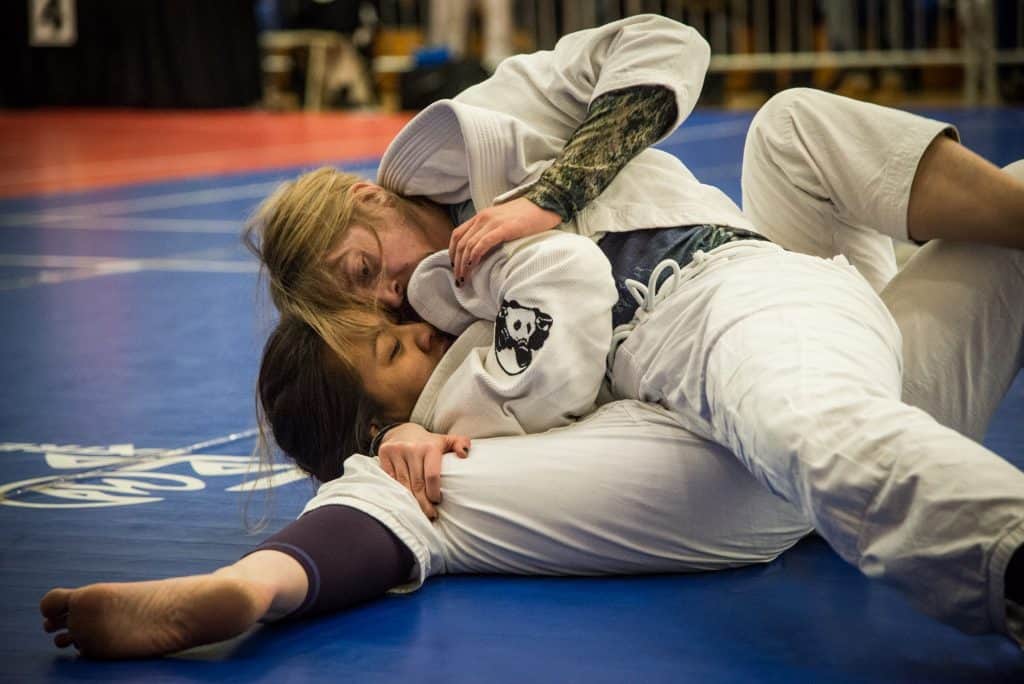Hell yeah! I passed guard. Time to lay down some punishment; but, no, legs get in the way. You get reversed, caught in a stupid reverse triangle. We’ll give you the know-how to make your side control a thing to be feared and not given up lightly.
Wedge yourself in
The thing that qualifies the position as side control is chest to chest contact with your legs free and pointing away from your opponent. Although you’re not given points for the position itself, if you pass the guard and land into side control you’ll get pass points. It’s a dominant position which allows you to control your opponent and even submit him. Now, depending on your partner’s reaction you’ll want to modify the position. There are two things you can do. You can move your hip and in doing so your legs and point of contact. The second thing you can do is move your arms. To summarize, you can do things to directly affect your opponent with your arms and legs.
Hip Positioning
Before we go in depth, leg positioning is completely dependent on the position of your hip. Your hip can be centered, on your left side, right side and sometimes centered with your butt pointing at the floor. The last one often happens when you go for a double and look at the ceiling before you stabilize.
Chest Contact, Light Pressure, Knees Wedged in
Depending on what your legs are doing your point of contact i.e. chest in this case will feel different to your partner. Your legs can be folded with knees tucked under your opponent’s hip and near-side shoulder. You’ve also got the advanced option of using your hip-side shin to block your partner’s legs from coming in kind of in the same way you’d do to transition into mount or knee-on-chest. If you go for the shin-block your cross-face shoulder and hip will slightly turn towards the ground. You won’t feel heavy but because of the tight wedge bridging will be ineffective. You’ll be able to follow your opponent everywhere.
Troubleshooting
The near-side arm will give you the most trouble when it comes to this type of side-control. If opponent frames against your hip, he’ll have the opportunity to escape. Counter this by passing the arm over your cross-face-side hip or trap it with your shins. He could also possibly frame against your cross-face elbow to escape. Be ready to counter this.
Chest Contact, Heavy Pressure
The other choice you’ve got is balancing on your toes with all of your weight going directly into your partner’s chest. Again, you’ve got the option of turning your hip towards your partner’s hip to get a really heavy cross face that will sometimes even make your partner tap. This way of positioning your body should feel really heavy to your partner. Don’t let your weight bleed into the ground by basing on your knees or elbows. Project your weight into his chest or cross-face.
Kesa Gatame and Twister or Reverse Side Control
Another choice you’ve got is turning your hip all the way to one side into kesa gatame or reverse-side-control. You should feel light contact with the ground against your thigh. Turning to the side means you’re not centered anymore. One of your grips will become dominant. If you turn towards the legs, your cross-face will be really heavy and you’ll have a free arm and leg to fight your opponent’s legs. If you turn towards the head, underhook or head-lock become dominant. Be careful with the headlock. There are a lot of counters to that one.

Summary
If you decide to adopt anything from this article, it should be the cross-face. BJJ practitioners sometimes call this head-hunting and a lot of end-game competitors use this as their main point of control. You grab a cross-face by latching onto the far-side lat muscle or GI. This’ll take the slack out and give you a really tight neck control. Where the neck goes, the body follows. Use this to your advantage.
